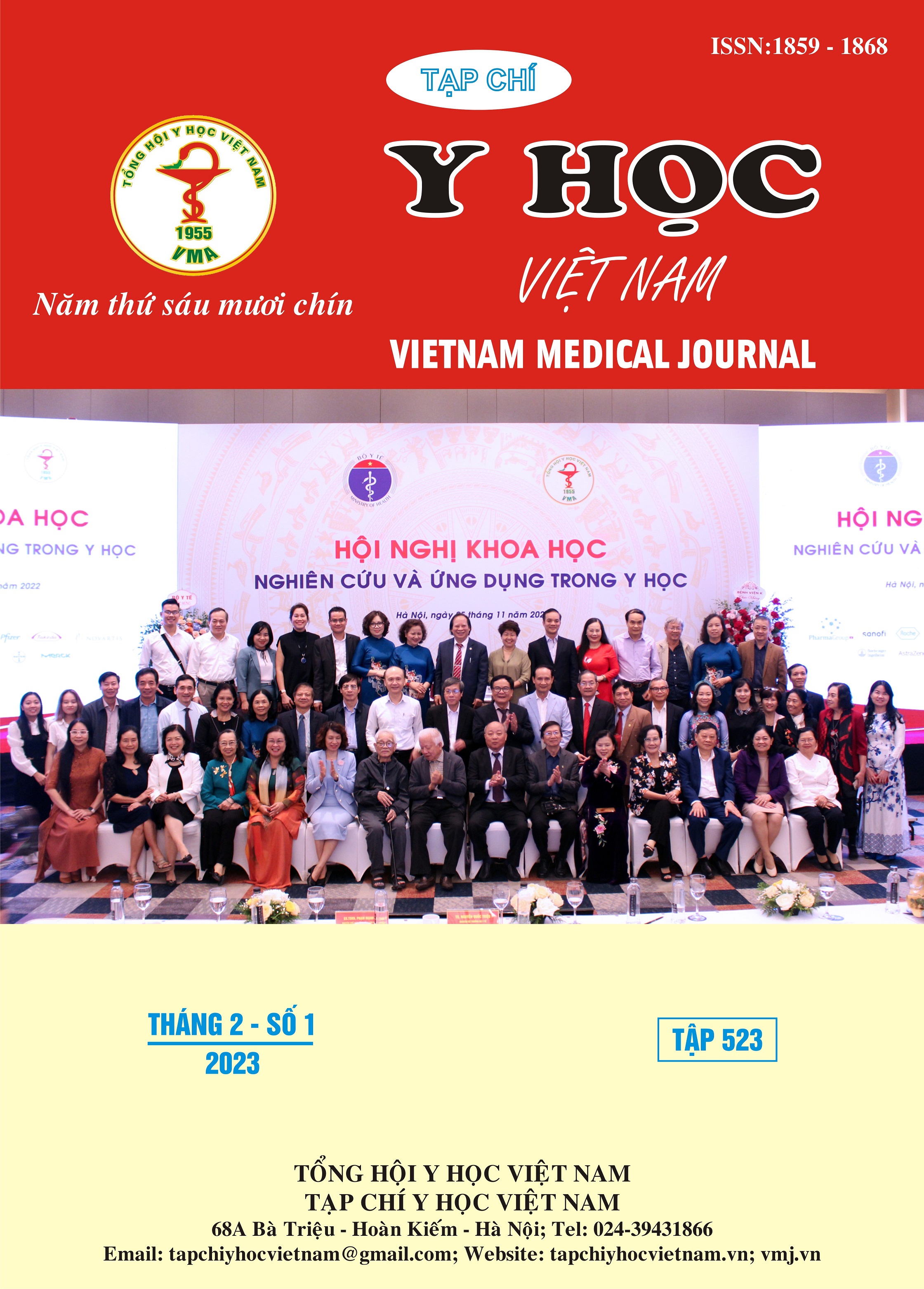THE FEATURES OF PRENATAL DIAGNOSIS BY ULTRASOUND AND TREATMENT RESULTS IN NEONATES WITH CONGENITAL DIGESTIVE MALFOMATIONS
Main Article Content
Abstract
Objectives: To discribe characteristics of prenatal diagnosis by ultrasound and treatment results in neonates with congenital digestive malformations (CDMs) operated. Material and method: Retrospective case series study, data were collected by medical records. Selection criteria: Neonates diagnosed with CDMs operated at Children’s Hospital N0 1 from 01/2020 to 06/2021. Results: 205 neonates with CDMs were operated. The percentage of pregnant women receiving prenatal examination, counseling and diagnosis was 100% (HCM City) and 95.6% (provinces). The most common prenatal diagnostic tool was ultrasound (97.6%). 42.5% cases were found CDMs by prenatal ultrasound. 45.8% of neonates were not examined immediately after birth. There were 22.9% cases of treatment failure at the local hospitals and then referral. The average age of neonates at admission was 5.19 days old. The average hospital stay was 25.4 days. 48.8% recorded complications. 77.1% of neonates were discharged safely. The mortality rate was 8.3%. There was a statistically significant difference in the rate of examination immediately after birth, time of hospital transfer, the reason for referral, number of days of treatment, multiple birth defects and chromosomal abnormalities, and mortality rate when comparing between the group of children whose mothers were diagnosed with prenatal ultrasound and the remaining group of neonates. Conclusions: Prenatal diagnosis of CDMs by ultrasound contributes to the treatment outcome of neonates with congenital gastrointestinal abnormalities.
Article Details
Keywords
Prenatal diagnosis, birth defects, congenital digestive malformations (CDMs), neonatal.
References
2. Dorothy I Bulas, Deborah Levine, Louise Wilkins - Haug, (2021), “Prenatal diagnosis of esophageal, gastrointestinal, and anorectal”, Uptodate Aug 17, 2021.
3. Ngô Minh Xuân (2012), “Tình hình tử vong ở các trẻ nhẹ cân tại khoa sơ sinh bệnh viện Từ Dũ từ năm 2000 đến năm 2011”, Tạp chí Hội Nội tiết sinh sản và Vô sinh TP.HCM năm 2012.
4. Orgul G, Soyer T, Yurdakok M, Beksac MS (2019) “Evaluation of pre and postnatally diagnosed gastrointestinal tract obstructions.” J Matern Fetal Neonatal Med 2019; 32:3215.
5. Terasa Marino (2017), “Prenatal Diagnosis for Congenital Malformations and Genetic Disorders”, www.emedicine.mescape.com
6. Trương Quang Định, Hà Tố Nguyên, Bùi Thanh Vân, Phạm Việt Thanh (2015), “Đánh giá vai trò của siêu âm chẩn đoán tiền sản trong phẫu thuật tắc đường tiêu hóa bẩm sinh”, Tài liệu hội nghị Việt - Pháp châu Á - Thái Bình Dương, TP.HCM tháng 5 năm 2015.
7. Vũ Thị Vân Yến (2017), “Nghiên cứu đặc điểm dịch tễ học lâm sàng, chẩn đoán trước và sau sinh các dị tật bẩm sinh ống tiêu hóa”, Luận án tiến sỹ Y học, Đại học Y Hà Nội, 2017.
8. WHO (2019), “Newborn: Reducing mortality”, WHO Fact Sheet, Sep. 2019.


